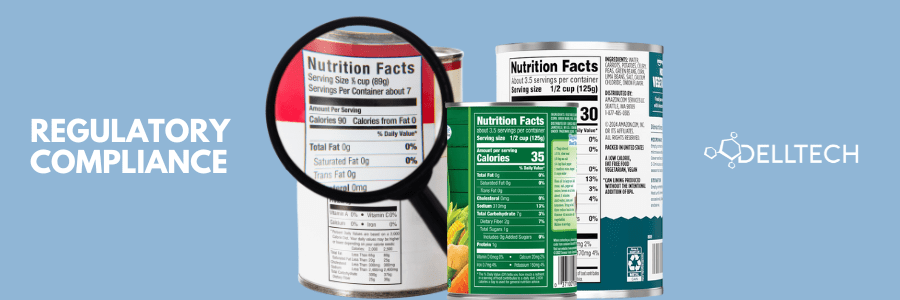Dell Tech is excited to announce the expansion of our food-related consulting services to now include U.S. food labeling regulations. While we have previously focused solely on Canadian label reviews, we are now equipped to support clients in achieving compliance with U.S. food labeling requirements as well.
One of the most common questions we receive as Canadian consultants is whether a Food product sold in the United States as a Food can still meet the definition of a Food when sold in Canada. Can I use my US labels in Canada? Will I need to reformulate to be sold in Canada? Can my product be sold under a different regulatory pathway other than Food? These are all questions that Dell Tech’s consultants are ready to answer to help get your product into Canada.
Although we are neighboring countries, Canadian Food Regulations differ quite significantly from the US. The most obvious difference is that Food is regulated by completely separate governing agencies; the Canadian Food Inspection Agency (CFIA) in Canada and the Food and Drug Administration (FDA), the Food Safety and Inspection Service (FSIS), and the Center for Disease Control and Prevention (CDC) in the US. Moreover, the variations in the established Acts and Regulations result in discrepancies in food ingredient acceptability. Ingredients approved under one jurisdiction are not necessarily acceptable in the other.
There are several examples of these inconsistencies, such as:
- Potassium bromate – this ingredient is banned in Canada but still used in the US
- Olestra – also known as Olean, is another ingredient acceptable in the US but prohibited in Canadian food products
- Flavouring agents – Canada has strict restrictions on the use of Flavouring preparations whereas the US does not
Even if all of the ingredients in the US-based product are acceptable in Canada, there is still one more hurdle to overcome: a compliant label. The labelling regulations in both countries differ substantially – from the language requirements, to the Nutrition Facts Table, making it impossible for US Food products to use the same label in Canada.
Do you have a US Food product you would like to bring into Canada? Dell Tech can help by providing you an indepth regulatory assessment of your formula. Contact us today for a quote!
DELL TECH HAS PROVIDED PROFESSIONAL, CONFIDENTIAL CONSULTING SERVICES TO THE SPECIALTY CHEMICAL INDUSTRY IN CANADA, THE USA, EUROPE AND ASIA FOR THE LAST 40 YEARS.
[INSERT_ELEMENTOR id=5705]





